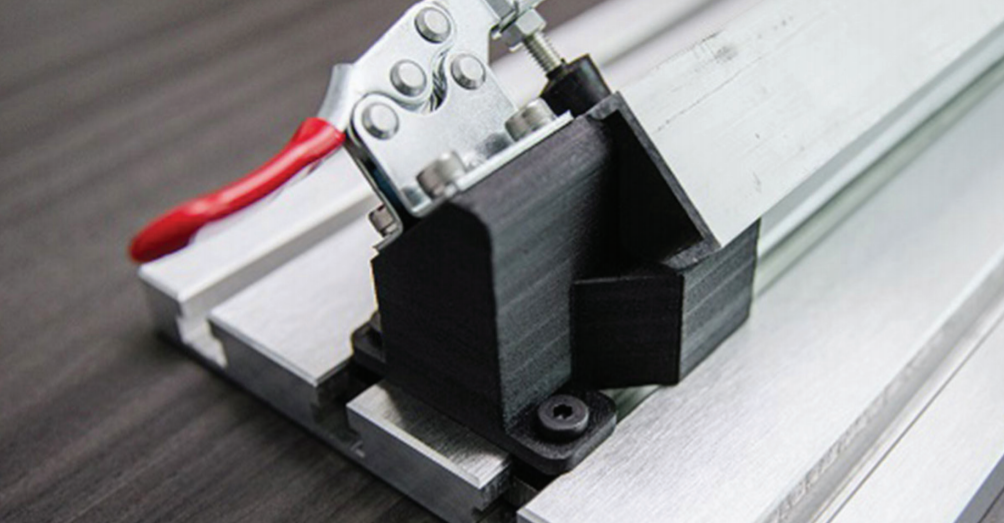
Creating your own custom jigs and fixtures can significantly enhance your manufacturing and woodworking processes by improving precision, efficiency, and repeatability. Whether you’re working on a DIY project or running a small production line, custom jigs and fixtures help streamline tasks, reduce errors, and save valuable time.
This article will guide you through the step-by-step process of designing and building your own jigs and fixtures, tailored to meet the specific needs of your projects. With the right approach and materials, you can transform your workflow and achieve professional-grade results with ease.
Understanding the difference between jigs and fixtures is crucial for optimizing your workflow. While both tools are designed to improve accuracy and efficiency in manufacturing or woodworking, they serve distinct purposes.
A jig is a guiding tool used to control the location and motion of another tool, such as a drill or saw. It ensures that the tool operates at the correct angle, depth, or position, improving precision and repeatability.
On the other hand, a fixture is a holding device that securely clamps a workpiece in place, allowing the tool to perform its function without any movement of the material. Fixtures are commonly used in milling, turning, and grinding processes to ensure stability and consistency.
In short, jigs guide tools, while fixtures secure workpieces. By using custom jigs and fixtures, you can enhance your production quality, reduce human error, and achieve faster turnaround times.
Jigs and fixtures are essential tools used in various manufacturing and woodworking processes to enhance precision, efficiency, and consistency. They play a crucial role in ensuring that repetitive tasks are performed accurately, making them ideal for both mass production and small-scale projects.
Jigs are primarily used to guide tools like drills, saws, or routers. They ensure that the tools operate in the correct position, angle, or depth, reducing human error and increasing the accuracy of cuts, holes, or other modifications.
Fixtures, on the other hand, are used to securely hold workpieces in place during machining, milling, or grinding. This stability ensures that the workpiece doesn’t move during the operation, leading to higher-quality output and reducing the risk of errors or damage.
There are several types of jigs and fixtures used across industries, each serving a specific function to streamline production processes. Below is a table outlining the most common types of both:
| Type | Jig/Fixture | Function |
|---|---|---|
| Drill Jig | Jig | Guides the drill to create accurate holes in specific locations on a workpiece. |
| Milling Fixture | Fixture | Holds the workpiece securely during milling operations to ensure precision. |
| Template Jig | Jig | Used to guide tools along a specific path, replicating shapes in repetitive tasks. |
| Turning Fixture | Fixture | Keeps the workpiece stable on a lathe for precise turning operations. |
| Welding Fixture | Fixture | Holds parts in place to maintain alignment during welding tasks. |
| Router Jig | Jig | Assists in guiding a router to cut specific shapes or patterns into materials. |
Each type of jig and fixture is designed to improve accuracy, efficiency, and repeatability in manufacturing and assembly processes, helping to achieve consistent results.
Creating your own jigs and fixtures can significantly enhance the efficiency and precision of your projects. Start by identifying the task you need to improve—whether it’s drilling, cutting, or assembly—and consider the specific requirements for accuracy and repetition.
For jigs, begin by designing a template or guide that will control the movement of your tool, such as a drill bit or router. Materials like wood, aluminum, or plastic are common choices, depending on the strength and durability needed.
For fixtures, design a structure that holds your workpiece securely in place. This often requires clamps or bolts to ensure stability. Fixtures should be rigid and able to withstand the forces applied during machining or assembly.
Using CAD software or manual drawings, finalize your design. Once built, test your jig or fixture for accuracy and make any necessary adjustments to improve performance. Custom jigs and fixtures can save time and ensure consistent results in your work.
When designing customized jigs and fixtures, it’s important to keep a few best practices in mind to ensure efficiency, accuracy, and durability. Here are some key tips:
Effective design of jigs and fixtures will boost efficiency and deliver high-quality, repeatable results.

When creating custom jigs and fixtures, choosing the right manufacturing method is crucial to ensure durability, precision, and cost-effectiveness. Here are some popular methods:
Each method offers unique advantages depending on the complexity, material, and volume of the jigs and fixtures you need.
The advent of 3D printing has revolutionized the creation of jigs and fixtures, offering unparalleled flexibility and efficiency. With 3D printing technology, manufacturers can quickly produce custom jigs and fixtures tailored to specific applications without the need for extensive machining or tooling.
One of the primary benefits of using 3D printing for jigs and fixtures is the ability to design complex geometries that traditional methods may struggle to achieve. This capability allows for the creation of lightweight yet durable structures that optimize production processes.
Additionally, 3D printing reduces lead times significantly. Designers can rapidly prototype and iterate on their designs, making adjustments as needed before final production. This adaptability ensures that the jigs and fixtures meet precise specifications, ultimately enhancing accuracy and productivity on the shop floor.
Furthermore, 3D printing can lower costs associated with material waste and inventory management, making it a compelling choice for businesses looking to innovate their manufacturing processes.
How 3DX can Help You:
Unlock the future of production with 3DX Additive Manufacturing! Whether you need rapid prototyping, custom parts, or low-volume production, our cutting-edge 3D printing solutions are designed to transform your ideas into reality. From advanced materials to the latest in 3D printing technologies, we deliver precision, efficiency, and unmatched quality.
Ready to take your business to the next level? Contact 3DX today to explore how our additive manufacturing services can revolutionize your operations!